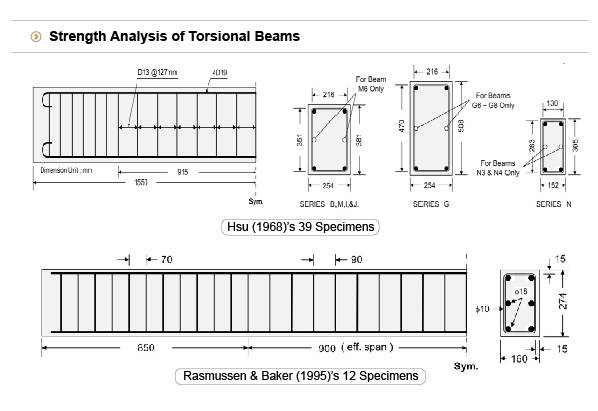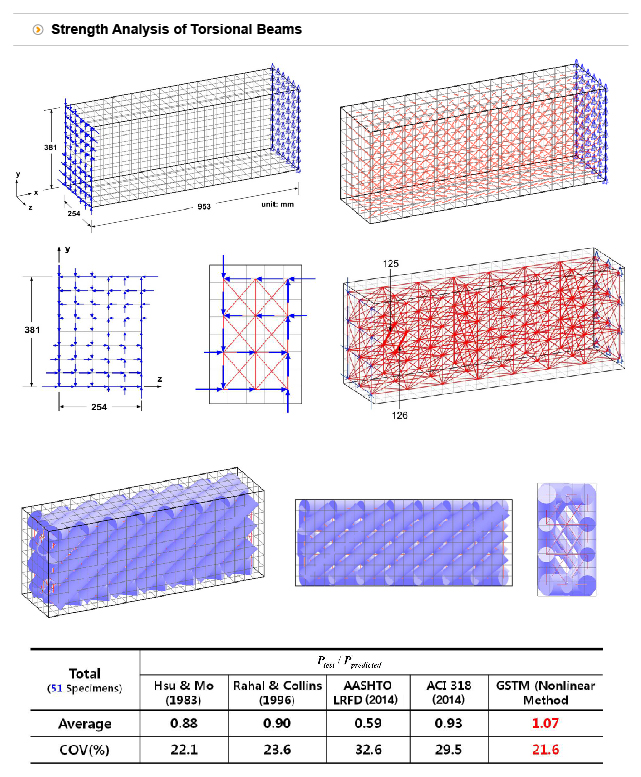| Grid Strut-Tie Model – Strength Analysis of Torsional Beam |
|---|
| Writer | admin | Date | 2020.01.22 | Hit | 651 |
|---|---|---|---|---|---|
| File | Strength-Analysis-of-Torsional-Beam-02.jpg | ||||

The evaluation of the 3-D grid approach was carried out using the ultimate strength of 60 reinforced concrete beams subjected to pure torsion to failure by Hsu (1968), Rasmussen & Baker (1995), and Koutchoukali & Belarbi (2001). For purposes of comparison with current codes of practice, the ultimate strength of the beams was also evaluated using the AASHTO-LRFD (2014) and ACI 318-14 (2014) design provisions, Hsu & Mo (1983)’s method, and method of Rahal & Collins (1996).

The ultimate strength of each of the 51 torsional beams evaluated with the existing and proposed methods are compared in Table. It must be noted that all the methods overestimated the experimental capacities. On the other hand, the ultimate strengths were evaluated satisfactorily by the proposed 3-D grid strut-tie model approach. Thus, the proposed approach can be conservatively used for members under torsion.
Reference
| Prev | |
|---|---|
| Next | Grid Strut-Tie Model – Design of Pier Coping |